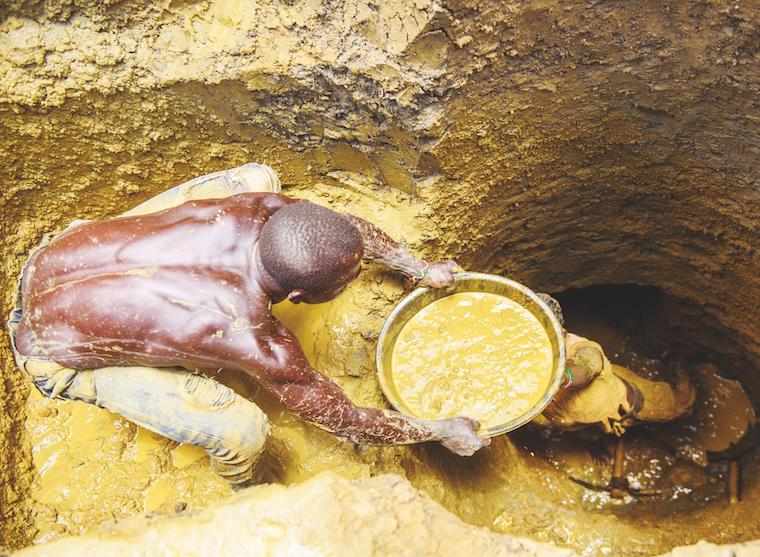What state participation means for Uganda’s mining sector
On February 17, 2022, the parliament of Uganda discussed and passed the new Mining and Minerals Bill, 2021 into law with several amendments. Once assented to by the president and gazetted, it will officially repeal the 2003 and 2004 mining regulatory framework.
There are several contentious provisions in as much as there are numerous progressive provisions. For now, I wish to analyse provisions relating to the proposed free-carry equity state participation and creation of a National Mining Company (NMC).
But first, it is important to recognise that the review of Uganda’s mineral policy, fiscal and regulatory framework commenced in 2014 under the stewardship of Dr Kabagambe Kaliisa who was at the time the permanent secretary in the ministry of Energy and Mineral Development.
It has taken Uganda close to seven years, a change of three permanent secretaries and three ministers to review and change the old policy, fiscal and regulatory framework.
However, it only took ‘an empty parliament’ with less than 200 members present, no Opposition MPs, inadequate consultations of key stakeholders and only eight hours to pass such a significant law. Requests from members of parliament from mineral-rich regions to be given more time to consult with their electorate and petitions from artisanal and small-scale miners across the country were rejected by the presiding speaker of parliament without any hearing.
The process and manner in which the Mining and Minerals Bill, 2021 was hurriedly discussed and reviewed by the Natural Resources Committee of Parliament was equally challenged by the Minority Report, setting a bad precedent.
CHANGES IN THE FISCAL REGIME (REVENUE COLLECTION AND MANAGEMENT IN THE MINERAL SECTOR)
At fiscal level, the law revises the royalty sharing propositions by giving the central government 65 per cent, district local governments 20 per cent, sub-county/town council 10 per cent and registered or customary owners, lawful or bonafide occupants of the land five per cent.
Stakeholders have argued that an increase of 10 per cent royalty from the 80 per cent under the existing Mining Act, 2003 remains insignificant to cause any change in the revenue streams of local governments and the livelihoods of landowners but this is an improvement from the old legal regime.
The new law also makes provisions for state participation in some medium to large-scale mineral project. The law grants the free-equity state participation to a tune of 15 per cent and an additional carried equity participation of 20 per cent and a maximum of 35 per cent n February 17, 2022, the parliament of Uganda discussed and passed the new Mining and Minerals Bill, 2021 equity in medium to large-scale licences.
Controversially, the law also gives powers to the government to exercise the option of transferring its interests to a third party without giving the licence holder the opportunity of the right of first refusal.
The law introduces Production Sharing Arrangements between the government of Uganda and mineral investors holding projects and licences under medium to large-scale licences as shall be determined by the minister of Finance in collaboration with the minister of Energy and Mineral Development in strategic mineral projects.
Most mineral-rich countries have put emphasis on the creation of a robust fiscal regime special to the mineral sector to maximise revenue generation during boom cycles while providing reliefs to the industry and investors during bust cycles.
There are limited checks on non- compliance and under-declarations by the mining company.
This could be improved by ensuring that all mine gates have a standard compliance audit process involving all parties to the royalties declared. These include the state (URA), the local government and representatives of landowners/ trusts or community land associations/ committees.
Waiver of royalty payment by the minister and cabinet without the involvement of the local governments and representatives of land owners is unlawful and takes away the right to raise revenues for local development by local governments and sub-counties. This provision also contravenes Article 26 of the Constitution on the right to property.
CREATION OF A NATIONAL MINING COMPANY (NMC)
The law creates a national mining company (NMC) which shall be funded by the consolidated fund and other sources as the minister may guide. Funding state participation presents another set of issues at the macroeconomic level. Funding of state participation can be problematic.
Much as the NMC may generate a lot of revenues, structurally NMCs also tend to be very cash-hungry. Funding significant participation draws resources away from other urgent budget priorities, jeopardizing overall development objectives, and creating social and political tensions.
It may also run counter to macro-economic and fiscal policies designed to protect the economy of a resource-rich country from Dutch Disease by investing in the growth of non-resource sectors.
Most resource-rich countries that have succeeded with the creation of National Mining Companies as well as National Oil Companies are known for their high governance ratings compared to Uganda’s well-documented fiscal indiscipline.
Governments are also not known to be good business managers. Some of the well-documented reasons for the failure of NMCs include, but not limited to, the following factors: lack of adequate data of a country’s commercial probable and proved reserves, NMCs tend to be grounded in systematic failures because employment in such institutions is rarely based on technical expertise and competence but, rather, a reward to political cronies, family relatives and friends (Angola is a classic example).
Macroeconomic mismanagement is another risk associated with NMCs.
This manifests itself in the management of both the expenditure side and the revenue side of the NMC. On the expenditure side, the assignment to NMCs of a long list of non-sector-specific tasks raises serious risks.
While understandable in one respect, MNCs having access to funds and, in relative terms, management skills, is bound to create problems. It is also common for NMCs to assume political demands for quasi-fiscal activities, which prejudice effective macroeconomic and budget management and make forward planning exceptionally difficult.
On the revenue side, the opacity of NMCs’ operations and substitution of revenue shares from equity participation for tax revenues, or assumption of fiscal agency responsibilities, often leads to weak accountability, non-compliance, and eventual revenue loss.
In a nutshell, it becomes complicated for government agencies such as the Uganda Revenue Authority to police one of their own and quite often the NMC is cornered into protecting the private sector joint venture partners through creative accounting.
NMCs are often faced with a balancing act: to fund their operational expenditures and capital expenditures, meet its share of cash calls, and satisfying political demands of the government.
CONCLUSION
The implementation of the new mineral sector law will cost government Shs 2,372.2 billion, of which only Shs 26.2 billion – the equivalent of one per cent – has been committed over a period of 10 years. Yet the implementation of the law alone is forecast to generate Shs 8,155 billion ($2.33 billion) over the same period of time.
There is no doubt that the new Mining and Minerals Act is progressive that seeks to address issues that have limited progress within the mineral sector under the repealed legal regime.
Attempts have been made to align it to Uganda’s vision 2040, the national development plans, the Africa Mining Vision, 2009 and trends in the international mineral market. The law benchmarks several regional and international mineral sector best practices.
However, it should be emphasised that a new mineral policy and legal framework, on its own, will not address all the above highlighted sector issues. Government must demonstrate a commitment to allocate technical and financial resources for the sector to realise the policy objectives and goals.
Government is also best advised to keep away from the proposed state participation in a volatile mineral market sector characterised by price booms and bust cycles with the creation of the ill-advised national mining company whose core objectives are best served through the design and implementation of a robust and flexible mineral fiscal regime that has seen most resource rich economies maximise and sustain revenue collection from the mineral sector.
donbb@acemp.org/acepolicy@gmail. com
The author is the executive director of the Africa Centre for Energy and Mineral Policy

